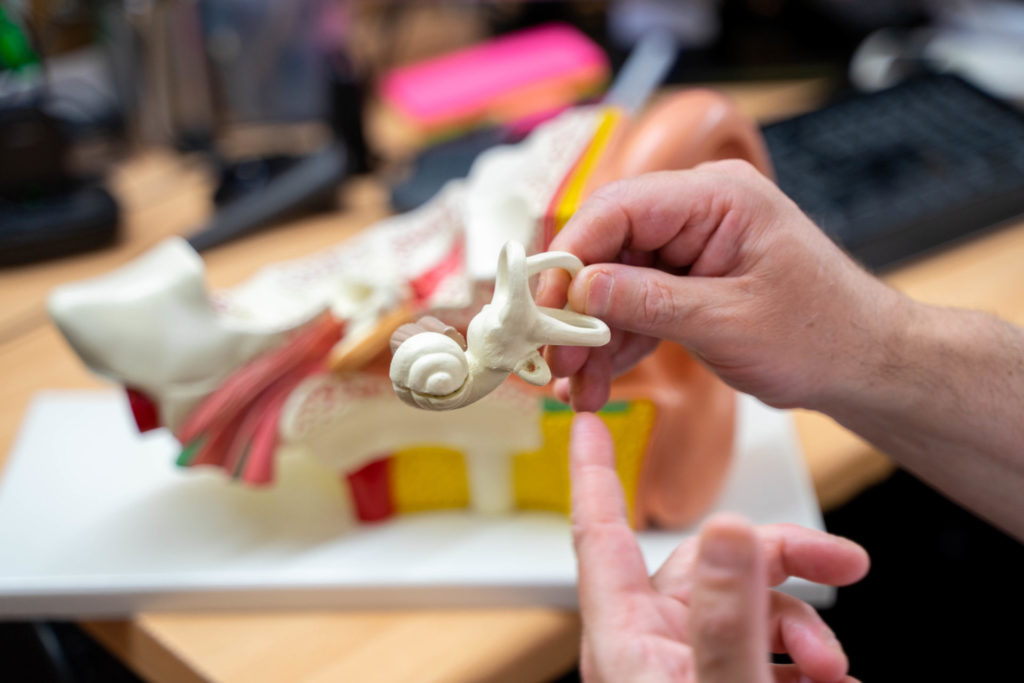Hearing care tips for preventing ear infections
Ears are a key part of our bodies so it is important that we look after them. Although ear infections are more common in children, 20% of adults are still affected by them. Here is a list of tips to help you prevent them and keep your ears happy and healthy for the future.
Avoid cotton buds
Although cotton buds are commonly known to clean our ears it is important they are used only on the exterior. By inserting a cotton bud into the ear, earwax containing bacteria can be pushed further into the ear canal. The further the bacteria travels, the more likely the ear is to get infected, due to the sensitive nature of the middle ear. Cotton buds should only be used for outer ear use, to get rid of any dirt around the ear. This ensures no bacteria enters the ear and any bacteria around the ear can be safely removed.
A much safer way to clean the inner ear is simply with a washcloth, just ensure to dry the ear afterwards. If there is a build up of wax you can apply some drops of baby oil to soften it. After waiting a day or two the wax should be softened, you can then wash with warm water and remove any buildup. Once again, ensure to dry the inner ear after washing.

Avoid smoking / smoky areas
Smoking causes many health problems, including the increased risk of ear infections. This is due to the tobacco damaging tissue in the nose and throat. Due to the ears being connected to the nose and throat through the Eustachian tube, they are then affected as well. Making them more susceptible to infections.
Second hand smoke is still able to cause this damage as well as direct smoking. Therefore, it is recommended to avoid smoky areas where possible, or if currently smoking try to stop. It can be difficult to stop smoking, especially if you have smoked for a while. However, through commitment, support and any needed alternatives it is possible. By stopping smoking, tissue can begin to recover and heal as well as other areas of the body being able to recover too.
Avoid putting your fingers in your ear
You are likely to handle around 140 objects per day, a lot of them being foreign. Therefore, if you are then putting your fingers directly in your ear, bacteria from these objects is being transferred into your ear. This bacteria could potentially cause an ear infection. Moreover, by putting your fingers in your ear there is also a chance of scratching the inside of your ear. This scratch could possibly get infected and cause an overall ear infection.
To prevent this from happening it is important to try to avoid touching your ears throughout the day. If your ear feels uncomfortable, the safest way to clean it is through warm water and a washcloth. If your ear still feels irritated it is best to go get it checked as touching it may make it worse.
Avoid too much water in ears
Although cleaning ears with water is safe and a recommended way of cleaning them, it is important to not submerge your ears in water for too long. This is because it can lead to ‘swimmers ear’ – a condition in which the moisture of the water builds the perfect environment for bacteria to grow around the ears. This bacteria then leads to ear infections.
Therefore, when taking a shower or cleaning your ears it is important to always ensure your ears are completely dry afterwards. If you are a routine swimmer, it is best to always dry your ears after each session as well as tilting your head to either side to remove any water left in the ear canal.

Avoid shampoo, hairspray and hair dye in ears
Each of these products can easily enter your ear throughout daily use, however they can each cause a chemical reaction in your ear too. This chemical irritation can then lead to an ear infection, so it is always best to try and avoid these products entering the ear as much as possible. If any of these products do enter the ear, it is important to try and remove as much of it as possible, as soon as you can.. This is easy to do by using a washcloth and warm water, however, as stated before it is still important to ensure that the ears are dried afterwards to avoid any moisture infection.
Ear infection treatment
If you have already contracted an ear infection they can sometimes be treated at home but it is important to first establish what infection you have developed. Therefore, you can apply the correct treatment.
Outer Ear infection
An outer ear infection is considered the least severe type of infection however, it can become serious if not looked after correctly. Symptoms of this infection consist of a pain in the ear which can range from being mild to a more intense pain. Dry skin may form around the ear in an eczema like form. In serious cases discharge may also exit the ear as well. There are various over the counter medications you can get to help this infection. Painkillers can be taken in order to assist any pain the infection may be causing, as well as acidic ear drops to stop any bacteria growing in the ear. Finally, it is also important to not let any water enter the ear canal as this may promote more bacteria to grow and increase the severity of the infection.
Middle Ear infection
Middle ear infections are more serious than outer ear however, they are still considered mild infections. Symptoms of middle ear infections are similar however, they also increase the chance of difficulty hearing. In addition to moderate ear pain and discharge. Middle ear infections are usually introduced from having other illnesses such as a cold, cough or flu. However, smoking can also make middle ear infections more likely to arise. Although pain killers can be used to aid the pain the infection may be causing it is always best to seek treatment for this type of infection as it is bacterial. Doctors will often prescribe antibiotics to treat this type of infection. If treated quickly it will usually heal within 1-2 weeks, the same as an outer ear infection.
Inner Ear infection
Inner ear infections are considered the most serious type of infection out of the three. This is because rather than a bacterial infection, it is viral. Symptoms of an inner ear infection are also more serious as this can consist of a high temperature, vomiting and lack of energy. You will be able to easily differentiate this infection from the others as these symptoms are not likely to appear within an outer or middle ear infection. It is important to seek medical attention as soon as you suspect an inner ear infection as a doctor can prescribe antibiotics in addition to any other medication that may be needed too. Once antibiotics are prescribed it will most likely take this infection around 1-2 weeks to recover.

Although a variety of these remedies can be done from home, if you are concerned about your hearing ability and are not sure whether it is related to an infection or wax build up then read more about our ear wax removal and hearing test services.
Get in touch
If you’re concerned you may have a problem with your hearing, or you’d like to arrange a hearing test for a family member, we’re here to help.
Nathan Gluck Hearing Care,
20 Wentworth Road,
Golders Green, London,
NW11 0RP, UK